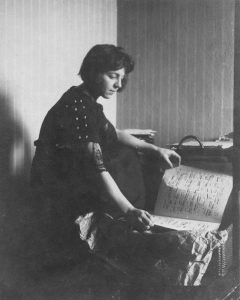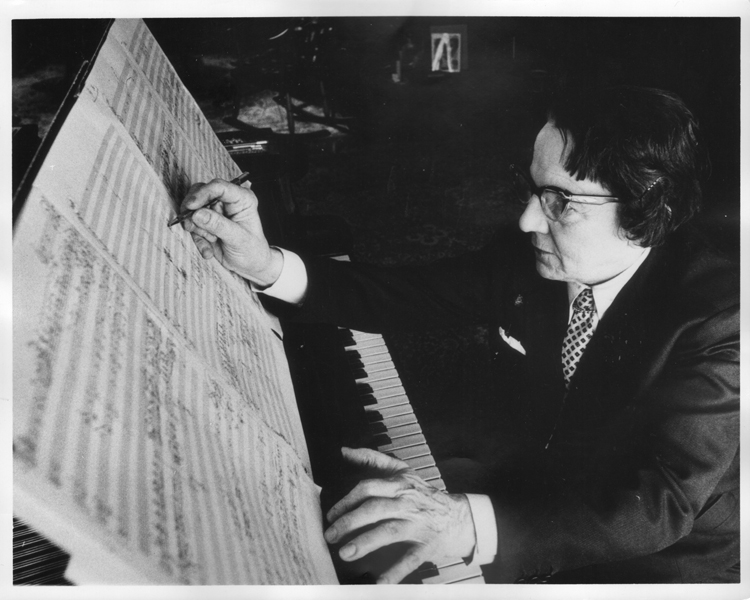Born in Moscow in 1899, Sophie Carmen Eckhardt-Gramatté (1899-1974) trained on both piano and violin, a rare combination for a composer. She initially studied at the Paris Conservatory, and later continued her music education in Berlin. Eckhardt-Gramatté was a well-travelled performer, often performing her compositions for both violin and piano. In 1920, she married painter Walter Gramatté and spent two years living in Spain, where she studied under Pablo Casals. It was during this period that Eckhardt-Gramatté wrote her first piano concerto.
Following the death of her husband Walter Gramatté, she embarked on a tour in the United States, performing to critical acclaim with Leopold Stokowski in Philadelphia and Frederick Stock in Chicago. In 1934, she married Austrian art historian Ferdinand Eckhardt and later pursued further lessons in composition with Max Trapp at the Berlin Academy of Arts. Her compositional style underwent a gradual transformation, influenced by the conservative aesthetic of her instructor, Max Trapp, and further informed by her relocation from Berlin to Vienna in 1939. This shift marked a pivotal point in her artistic development.
 Eckhardt-Gramatté was, in many ways, a composer’s composer—resolutely independent in voice and uninterested in following the prevailing compositional fashions of her time. Her are marked by their expressive power, rhythmic vitality, and technical demands—often composed with her abilities in mind. Drawing from a broad palette of influences.
Eckhardt-Gramatté was, in many ways, a composer’s composer—resolutely independent in voice and uninterested in following the prevailing compositional fashions of her time. Her are marked by their expressive power, rhythmic vitality, and technical demands—often composed with her abilities in mind. Drawing from a broad palette of influences.
Eckhardt-Gramatté created a dense, aggressive style that was much closer to, and dependent on, late romanticism than on twentieth-century techniques. Her use of dissonance was a logical development from post-Wagnerianism, although it never reached the emotional atonality of the Viennese masters (Schoenberg, Berg, and Webern). Nevertheless, one detects some characteristics, especially in the style of her early works, that “show(s) a lively mind in grips with modern tendencies and using high technical accomplishments in exploiting the resources of a new and musicianly polyphony.” — Grove Dictionary of Music and Musicians, 1954.
Since her passing in 1974, Eckhardt-Gramatté’s work has slowly garnered the attention it demands—not just as historical curiosity, but as repertoire worthy of serious study and performance. The Eckhardt-Gramatté National Music Competition, established in 1976, continues to champion new music and emerging performers, many of whom find in her work a model of uncompromising originality.
Fast Facts about Sohpie Carmen Eckhardt-Gramatté
- She received an honourary doctorate in music from the University of Brandon and the title of professor from the Minister of Education, Vienna, Austria.
- Eckhardt-Gramatté was the first Canadian composer to receive the Diplôme d’Honneur
- In addition to writing music, she developed a piano teaching method, the ‘E-Gré Piano Technique’, whose basis is the use of rotary movement.

